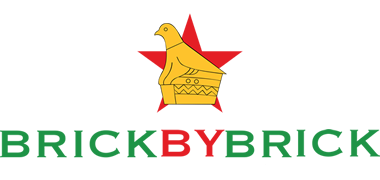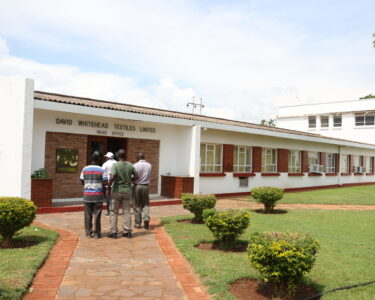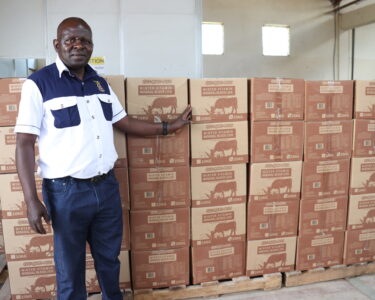Mashonaland West Province likes to call itself “Mash Best”, the best province in the country. One of the “best” success stories of Mash Best by a country mile is the Chinhoyi University of Technology (CUT), which has taken the government’s Education 5.0 policy to another level. It is amazing to behold. Baffour Ankomah reports.
It is not for nothing that the Chinhoyi University of Technology (CUT) is the first major institution that welcomes visitors (coming from the Harare road) to the historic town of Chinhoyi where the liberation of Zimbabwe from 90 years of rank colonialism began.
On 28 April 1966, seven gallant sons of the land, all patriotic cadres of ZANLA, started the opening engagement of the Second Chimurenga when they opened fire on the colonial police forces near Chinhoyi. Though all the seven died in the battle, the fire that was lit on that day culminated in the liberation war that brought independence to Zimbabwe on 18 April 1980.
Chinhoyi therefore occupies a special place in the annals of Zimbabwe, and the university that was planted in the historic town on 10 December 2001 by an Act of Parliament, has become the pride of not only Mashonaland West Province but the country as a whole.
The Chinhoyi University of Technology (CUT) grew out of the old Chinhoyi Technical Teachers’ College which was founded in 1991, and whose first degree programmes were offered in 1999 under the auspices of the University of Zimbabwe. But today CUT is clearly a cut above other universities in Zimbabwe when it comes to the implementation of the government’s Education 5.0 policy
“We see ourselves 10 years from now as being an industry-based university where the university’s funds are augmented by our own industries. That’s where we are moving towards. It is difficult for people to visualise it now, but it is going to happen. Step by step, brick by brick, we will get there,” says the woman in charge of teaching the teachers at CUT, Prof Maria Tsvere, whose official designation is Professor of Teaching and Learning.
Prof Tsvere is something else. She is not your ordinary red-tape-loving official. Once a call of duty beckons, she performs it gladly even if a visitor has an appointment or not. On 22 November 2022, a team of visiting Brick by Brick editors on a tour of Mash Best to assess what the province has achieved since the birth of the Second Republic, arrived in Prof Tsvere’s office with only 15-minutes prior notice from the Minister of State’s office, and the dutiful lady obliged.
The Brick by Brick editors wanted to see what CUT had done with Education 5.0 as part of Mash Best’s contribution to the government’s Vision 2030 programme, and Prof Tsvere dropped everything and took us around CUT’s impressive Agro Industrial Park, with a few relevant university officials in tow.
The Park started in 2011, six years before the Second Republic came into being. But since 2018, when Education 5.0 was given a special impetus by the Second Republic, CUT has gone up several notches. If the ZANLA freedom fighters who chose Chinhoyi as the location for the launch of the Second Chimurenga could wake up from their graves, they would be super proud of this university. They would know that they had not died in vain.
On 15 September 2022, President Emmerson Mnangagwa commissioned three impressive projects at CUT’s Agro Industrial Park, the star of which is a Block Lick Press Factory, which produces feed for both domestic and game animals. The products from this factory have taken Zimbabwe by storm and are causing so much joy in farming communities across the land. (See Brick by Brick’s conversation with CUT’s acting vice chancellor, Prof Irvin Mpofu on page ….)
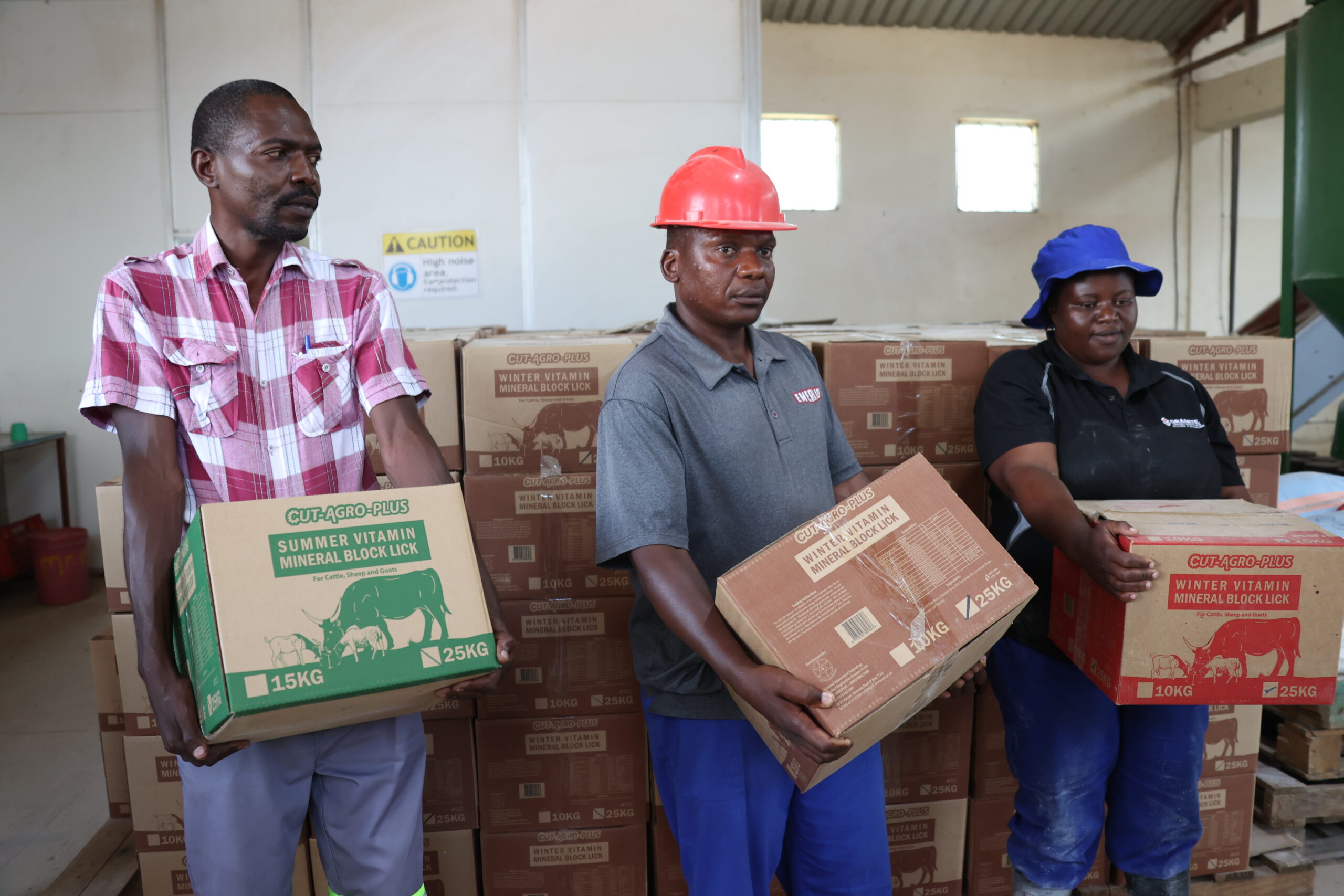
Other projects
There is also a diary project (or a Milking Parlour) on the Agro Industrial Park. Fifty-four healthy cows are involved in this automated milking unit, where everything is computerised. The cows are tagged, so as they are being milked, the system picks up information from the ear tags and displays it on a monitor, so the workers are able to tell how much milk a cow has produced. The milk is then pumped into a bulk tank for processing into pasteurised milk or yohurt.
Because the project is new (it was commissioned by President Mnangagwa on 15 September), the output is currently not as impressive as the university wants – 600 litres per day from the 54 cows, which gives an average of 11.11 litres per cow, instead of the ultimate goal of 20 litres or more per cow.
There is also an Industrial Pen Fattening and Cattle Breeding Project on the Agro Industrial Park. The breeding project aptly carries the moniker, “Re-Stocking Zimbabwe”.
Here you meet some of the biggest bulls you can ever find anywhere on earth whose only job is to produce semen for artificial insemination. Currently there are 17 breeds involved in the project. Semen is collected on site, then taken to the university’s laboratory where it is processed, and then sold to farmers. And all this, is part of Education 5.0 in practice at CUT.
Unlike the past where theory was supreme in the corroders of learning in Zimbabwe, now the emphasis is on affording students the opportunity to learn on the job. So at CUT, students studying agriculture and its manifold disciplines are brought to the Agro Industrial Park to learn how to milk and process milk as part of their degree courses. The Milking Parlour also takes interns on attachment.
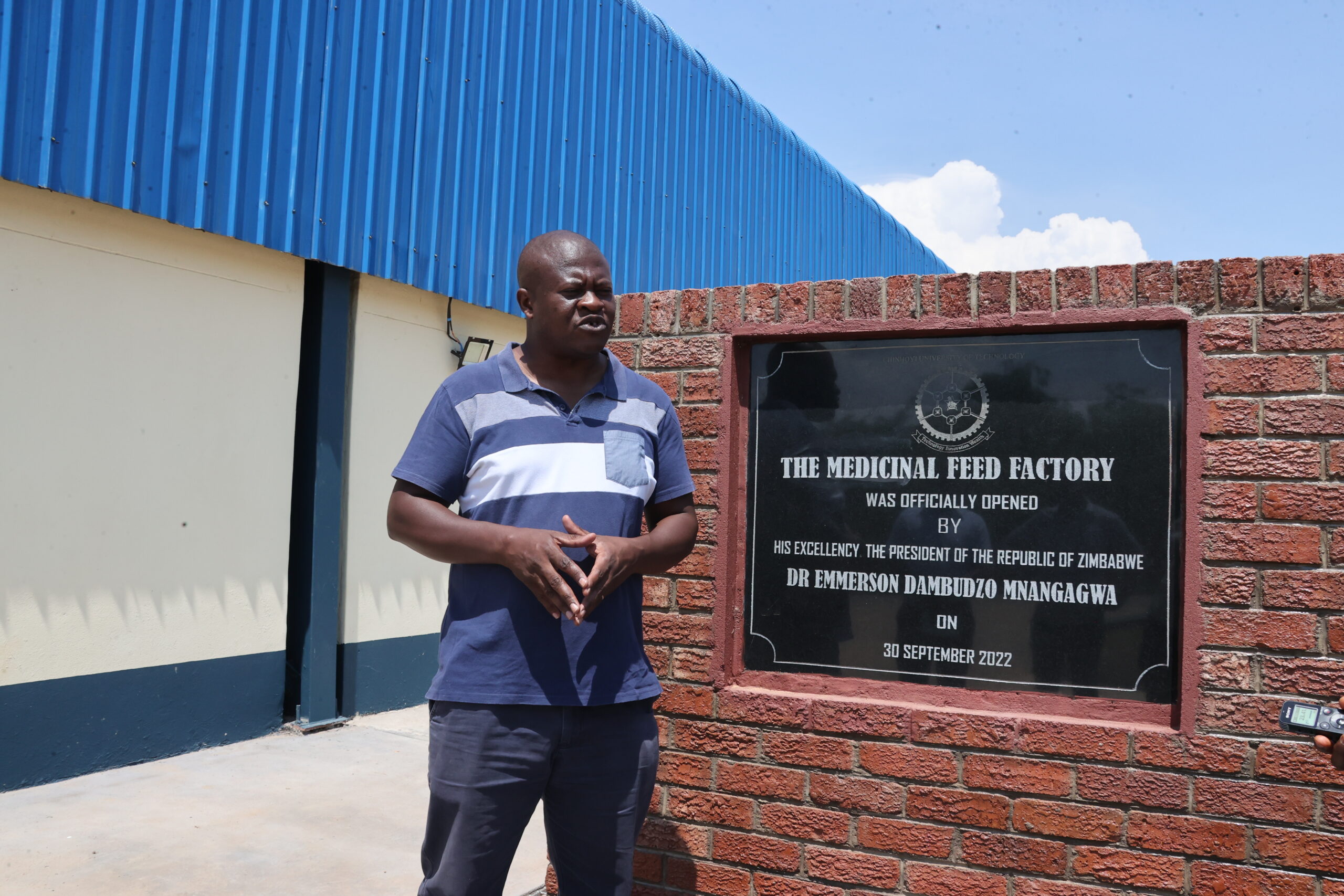
three impressive projects at CUT’s Agro Industtrial Park
Equally, students are also taken through their paces at the Industrial Pen Fattening project to learn how to do the job before they graduate. The days of “theoretical graduates” with high-falutin degrees are gone forever at CUT. The fashion now is for students to incubate their ideas at the university’s innovation hub where the real action begins, and then they get support from the university to bring their business and other commercial ideas to fruition.
“Next year,” Prof Tsvere told Brick by Brick, “students will have a ‘field day’ visiting CUT’s industries, including our cloth-making industry and printing press. So before our students graduate, they would have gone through the whole gamut of the CUT industries, made up of three hotels, an agro-industrial park, a clothing industry, printing press, and crop farming.” CUT does hundreds of hectares of maize, wheat, and other crops.
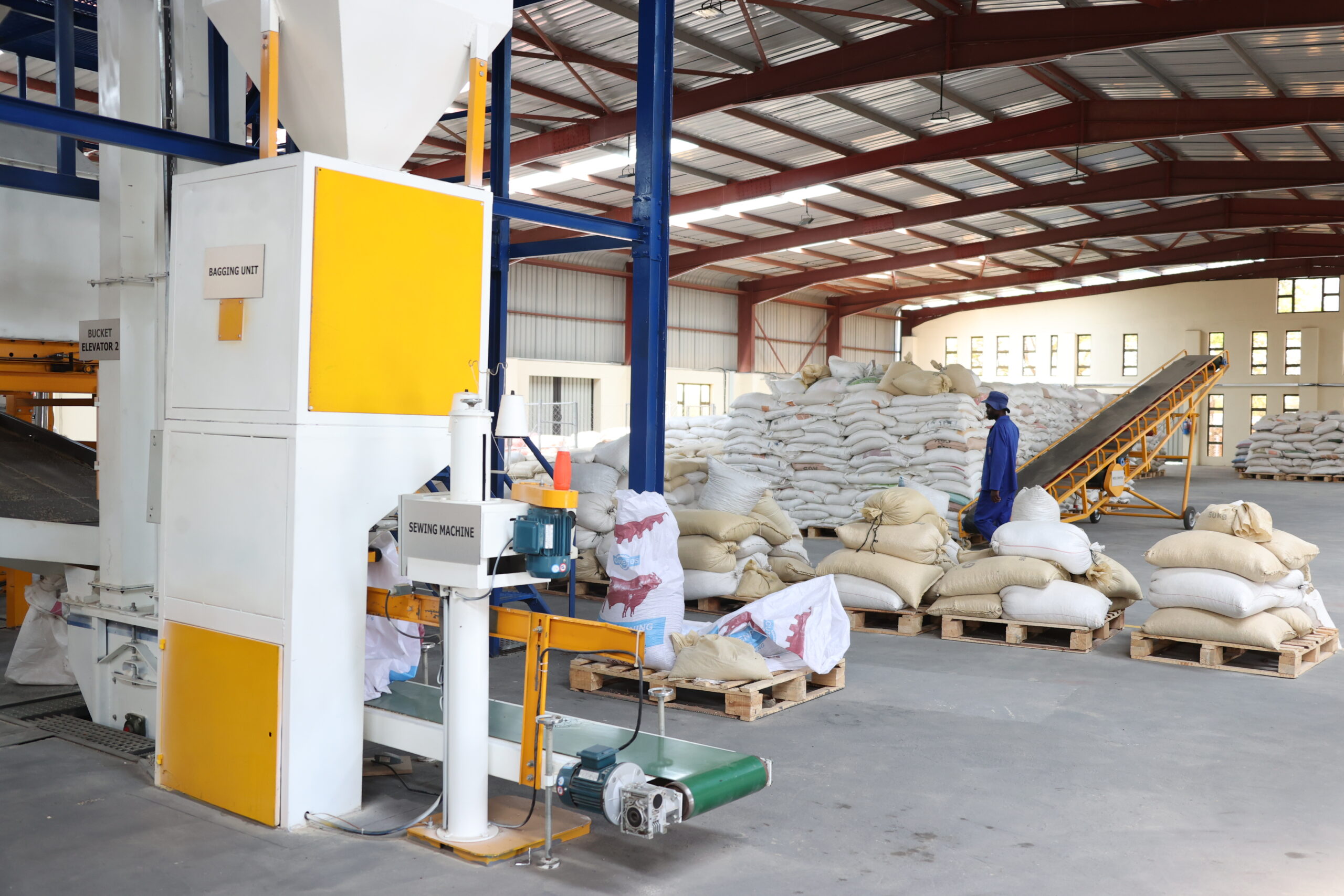
Block Lick Press Factory
By far the most famous product from CUT’s Agro Industrial Park is a vita[1]min mineral block lick for cattle, sheep, goats and game animal. It comes in 25 kg blocks. Four types are produced in their urea-free factory for both the summer and winter periods. There are also game blocks for fish. The blocks are also fit for all small ruminants, even young animals. Because the government supports the project, CUT is able to sell the product at an affordable price, US$14, much cheaper than the other manufacturers of similar but not-so-good licking blocks. CUT puts 11 ingredients in its product while other manufactures put far less. The star ingredient in CUT’s blocks is tobacco ash which is abundantly produced by tobacco farmers across the country in curing their tobacco, but which they find so difficult to dispose off and thus has become a major headache for farmers. Even better, CUT’s product is “heritage-based” as the ingredients are from the natural environment. Some of the ingredients are plant medicines which are obtained from Zimbabwe’s indigenous knowledge system, which incidentally are not found in the products manufactured by other companies. To maximise on the plant medicines, CUT has established a brandnew Medicinal Feed Factory on the Agro Industrial Park (which was also opened by President Mnangagwa on 15 September 2022). “This was built on indigenous medicinal knowledge systems,” Raymond Murombedzi, manager of the Medicinal Feed Factory told Brick by Brick on 22 November. “There is a lot of herbal and organic shrubs and trees which the people of this country used to use, and are still using, in the villages to treat illnesses and to grow animals. So we are using some of them here in this factory,” Murombedzi explained. “There have been trials done indigenous knowledge systems and products. The trials have shown that some of the herbs and shrubs clean out internal parasites and help with animal nutrition, making the animals better.” For the first time in Zimbabwe, the factory is making feeds in pellets for ruminants to help quicken their growth rate. According to Murombedzi, you get 15% more efficiency using pellets because the animals eat better than in other feed formats. CUT uses a variety of raw materials like maize bran, wheat bran, grass, medicinal plants, etc, to manufacture its pellets.
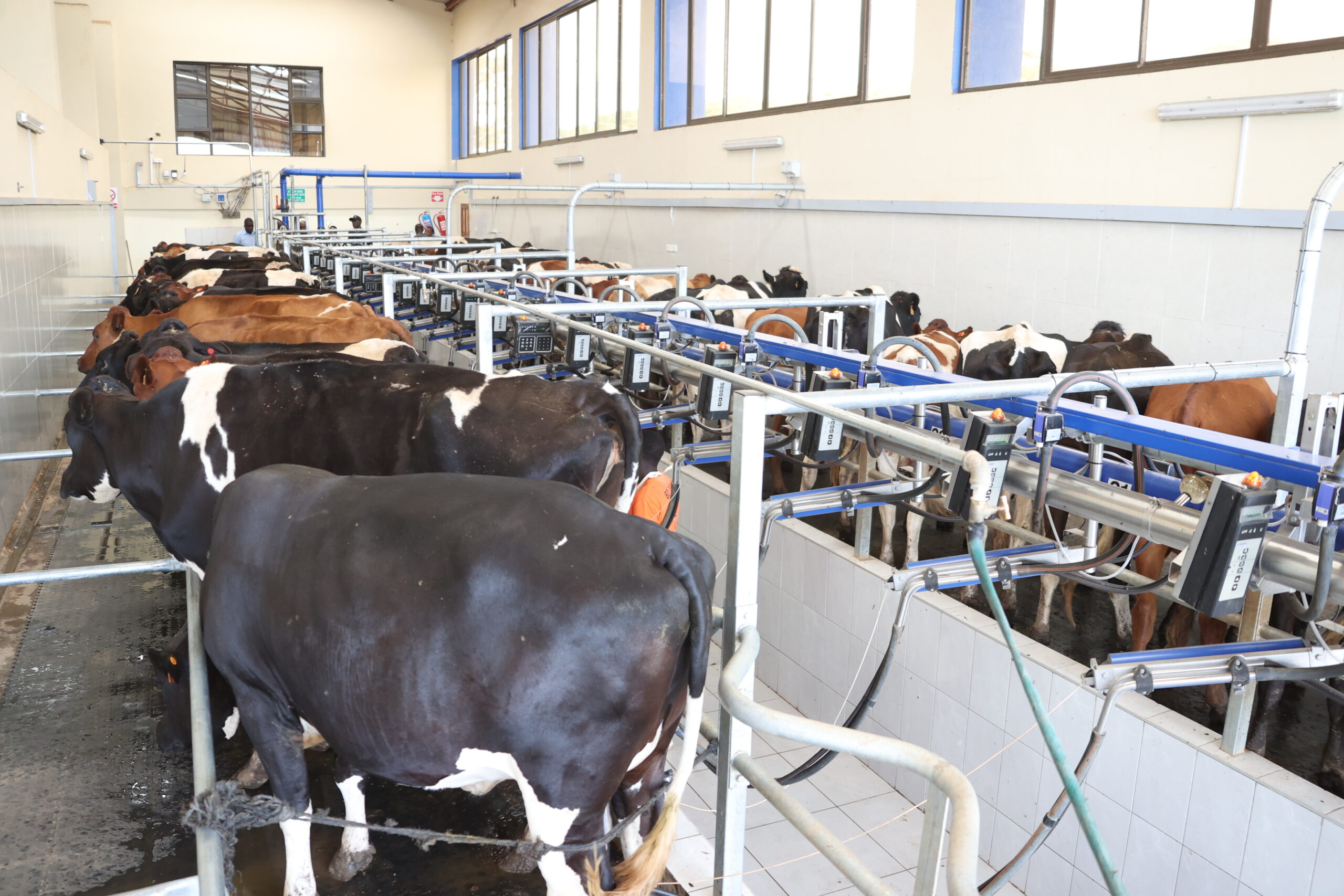
Industrial Pen Fattening Unit
Also doing very well on CUT’s Agro Industrial Park is an industrial pen fattening project whose goal is to produce high quality meats for both the local and export markets. Here again, the objective is to give students the opportunity to learn on the job in line with the demands of Education 5.0, which insist on practical training. Another objective of the pen fattening project is to produce electricity for the university via a biogas plant. The manure from the feed load goes to the biogas plant which produces methane gas, which produces electricity for the generators used on the Agro Industrial Park. The fattening project was also com[1]missioned by President Mnangagwa on 15 September 2022. The first trial run or induction involved 32 cattle, all of which did very well (gaining 900 grammes per day), and were sold. Altogether, there are 352 breeding stock for the project, which is currently running three schemes. In the first scheme, the university uses its breeding stock to produce the cattle required by the project. In the second scheme, farmers from outside the university bring in their cattle for fattening. The university feeds them, sells them, and shares the profit with the farmers. The breeding stock is fed with licking blocks from CUT’s factory. The third scheme is a “brought-in programme” where the university goes around the country, buys cattle, brings them to the Agro Industrial Park, fattens them, and sells them. A total of 1,800 cattle can be fattened at the unit per year before sale. The unit will be fully operational from June 2023. As part of its contribution to the government’s Vision 2030 programme, CUT allows agricultural extension officers to come for training at the Agro Industrial Park, so that the knowledge gained there can help farming communities nationwide. Prof Masvere said the university

